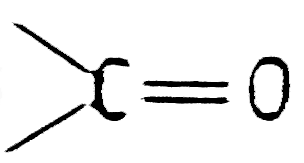The addition of HCN to carbonyl compounds is an example of .............. reaction.
Nucleophilic substitution
Electrophilic addition
Nucleophilic addition
Electrophilic substitution
The correct Answer is:C
Nucleophilic addition
Topper's Solved these Questions
- CARBONYL COMPOUNDSBOOK - FULL MARKSCHAPTER - CARBONYL COMPOUNDSEXERCISE - ADDITIONAL QUESTIONS (FILL IN THE BLANKS)
43 Videos
- CARBONYL COMPOUNDSBOOK - FULL MARKSCHAPTER - CARBONYL COMPOUNDSEXERCISE - ADDITIONAL QUESTIONS (MATCH THE FOLLOWING)
12 Videos
- CARBONYL COMPOUNDSBOOK - FULL MARKSCHAPTER - CARBONYL COMPOUNDSEXERCISE - EVALUATE YOURSELF
6 Videos
- BIOMOLECULES BOOK - FULL MARKSCHAPTER - BIOMOLECULES EXERCISE - ADDITIONAL QUESTIONS (5-MARK QUESTIONS)
12 Videos
- CHEMICAL KINETICSBOOK - FULL MARKSCHAPTER - CHEMICAL KINETICSEXERCISE - ADDITIONAL QUESTIONS (5 MARK QUESTIONS)
10 Videos
Similar Questions
Explain the mechanism of nucleophilic addition to a carbonyl group and give one example of such addition reactions.
View SolutionAlkenes and carbonyl compounds both contain a π bond but alkenes show electrophilic addition reaction whereas carbonyl compounds show nucleophilic addition reactions. Explains.
View Solution
Knowledge Check
The addition of carbonyl compound to HCN is an example of
ANucleophilic substitutionBElectrophilic additionCNucleophilic additionDElectrohilic substitutionReaction of ammonia derivative with carbonyl compound is an example of -
AAddition and SubstitutionBSubstitution and EliminationCAddition and EliminationDAddition and intramolecular substitutionStatement-I: Rate of addition of HCN on carbonyl compounds increases in presence of NaCN
Because
Statement-II: Reaction involves the addition of CN− in rate determining step.AStatement-I is True, Statement-II is True : Statement-II is a correct explanation for Statement-IBStatement-I is True, Statement-II is True : Statement-II is NOT a correct explanation for Statement-ICStatement-I is True, Statement-II is False.DStatement-I is False, Statement-II is True.
Alkenes
 and carbonyl compounds
and carbonyl compounds  both contain a π bond but alkenes show electrophilic addition reactions whereas carbonyl compounds show nucleophilic addition reactions. Explain.
both contain a π bond but alkenes show electrophilic addition reactions whereas carbonyl compounds show nucleophilic addition reactions. Explain.
View SolutionAlkenes
 and carbonyl compounds
and carbonyl compounds  both contain a π bond but alkenes show electrophilic addition reactions whereas carbonyl compounds show nucleophilic addition reactions. Explain.
both contain a π bond but alkenes show electrophilic addition reactions whereas carbonyl compounds show nucleophilic addition reactions. Explain.
View SolutionDiscuss the relative reactivities of carbonyl compounds in nucleophilic addition reactions.
View SolutionThe reactivity of carbonyl compounds towards nucleophilic addition reaction gets affected by
View SolutionThe reactivity of carbonyl compounds towards nucleophilic addition reaction gets affected by
View Solution
